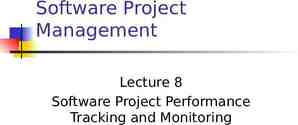Sun Safety at Work Canada Solar UV Exposure Training for Supervisors
26 Slides2.80 MB
Sun Safety at Work Canada Solar UV Exposure Training for Supervisors
Purpose of this Training The objective of this training is to provide basic information for supervisors about solar UV exposure and how to protect employees from this hazard. The content will explore: – The hazard posed by Solar UV – The health effects of exposure to Solar UV – The extent of the problem – Facts related to UV safety – Methods to protect employees from exposure to Solar UV
What is Solar UV? UV is short for Ultraviolet Radiation. Solar UV part of the spectrum of radiation that is contained in the energy from the sun that reaches the earth. Some of this radiation is in the form of visible light. Visible light is what our eyes use for sight, to perceive shape and colour. UV rays are invisible. Their energy is stronger than visible light and weaker than x-rays.
Sun Exposure and Your Skin Exposure to UV from the sun can lead to: – Skin cancer: basal cell carcinoma, squamous cell carcinoma (together referred to as nonmelanoma skin cancer) and melanoma – Sunburn – Skin damage Notes on Images: Top photo basal cell carcinoma; Bottom photo melanoma Photo source: http://www.cancer.org/cancer/skincancer/galleries/skin-cancer-images
Facts About Skin Cancer UV from the sun is the primary cause of skin cancer. Skin cancer is the most commonly diagnosed cancer in Canada and rates are increasing. – Around 80,000 new cases of non-melanoma skin cancers and 7,000 cases of melanoma each year. 1 in 3 cancers is a skin cancer.1 Outdoor workers are up to 2.5 to 3.5 times more likely to be diagnosed with skin cancers.2 Skin cancer is largely preventable.
Health Outcomes of Skin Cancer Even if identified early, skin cancer often requires surgery and leaves permanent scarring. The average melanoma patient loses 28 days of work per diagnosis.3 Over 1,200 Canadians die from melanoma skin cancer each year, and rates are rising.1
Occupational Sun Exposure & Skin Cancer At least 4,560 non-melanoma skin cancers each year attributed to occupational solar radiation4 Comparison: Asbestos: 1900 lung cancers & 430 mesotheliomas Diesel engine exhaust: 560 lung cancers & 200 suspected bladder cancers Crystalline silica: 570 lung cancers
Occupational UV Exposure Of the 1.5 million outdoor workers in Canada, about 900,000 are outside at least 6 hours a day.5 Outdoor workers often work when the sun is the strongest. Spending lunch and breaks out of the sun can have a significant impact on lowering your exposure. The months of concern in Canada for high UV exposure are April to September, but winter months also hold risk due to reflection and glare from snow. Image provided by Queensland Department of Health
Solar UV Management Solar UV safety policy (or sun safety policy) Solar UV safety program (could be part of a sun safety program): Risk assessment process Control measures – general controls and job specific controls Training and education of workers Incident response, reporting and investigation including first aid ‘Check’ elements – workplace inspections, annual audits, documentation
Solar UV Risk Assessment 1. Operational Review – to gain an understanding of the operational environment and risk factors for solar UV exposure/ over-exposure 2. Job Safety Analysis – detailed measurement of solar UV exposure for positions which may need this level of assessment 3. Daily Assessment – during summer, review of UV Index and determine if ‘extra protection’ is needed
Hierarchy of Control Measures The most effective controls should be implemented first. Then, less effective controls should be implemented in order and only when hazard control is not achieved through more effective controls. Most effective to least effective controls: – – – – – Elimination or Substitution (not possible with the sun) Engineering Controls Systems that Increase Awareness Administrative Controls Personal Protection Use a combination of control measures
Control Measures Engineering controls: – Shade: permanent structures (for example on machinery), temporary structures/canopies, use of trees – Minimize reflective surfaces – Window tinting of vehicles, drive with widows up Increase awareness: – Signage and posters
Control Measures Administrative controls: – Daily procedures for supervisors to assess risk (UV Index) – Procedures for use of personal protection – Re-scheduling of work tasks to lower UV times (or allow to work in shade during high UV times) – Training – orientation, ongoing (for example safety talks, presentations for workers) – Modelling of sun safe behaviours by supervisors
Control Measures Personal Protection – Long sleeve shirts and long pants – Wide-brimmed hats and hard hats with an additional brim and neck flap – Sunglasses and protective eyewear – Sunscreen
Protection Measures Workers Should Take
Facts About UV Protection No matter how dark your skin is, everyone is at risk of sunburns and skin cancer. A tan is an indication of skin damage. Even with a tan you can get sunburned. Any sun exposure contributes to long term skin damage. Working in the shade and wearing lightweight clothing that covers as much of the body as possible, including hats, are the best forms of protection when out in the sun. Between 11am and 1pm, if worker can work or take a break in the, their overall UV exposure can be reduced by 40%.6 Image provided by Queensland Department of Health
Facts about Sunscreen (1) Sunscreen is effective when applied correctly. Use a sunscreen that is SPF 30, broad spectrum and water-resistant. Sunscreen should be used in combination with other controls (long clothing, hats, shade, sunglasses). Apply generously and use more than you think you need. Reapply regularly. Sunscreen begins to work as soon as you apply it. Use sunscreen as part of your preparation for the day, just like brushing your teeth. Image provided by Queensland Department of Health
Facts about Sunscreen (2) Sunscreen ingredients are tested and must follow health guidelines to make sure they are safe to use. Store sunscreen in a cool place as it can deteriorate if stored in hot conditions. You can use sunscreen and bug repellant together. Apply sunscreen first before applying insect repellent. You should reapply sunscreen as needed, and more often if you’ve been in the water or sweating, while insect repellent may last for several hours.
Vitamin D The sun is not the only source of Vitamin D. Vitamin D can be obtained safely from foods like dairy products, fatty fish, fortified foods and/or supplements. Intentional sun exposure to meet vitamin D requirements is not recommended.
Resources (available at sunsafetyatwork.ca) Posters: solar UV prevention; daily UV Index Fact sheets: solar UV prevention, photosensitizing substances, shade, protection from solar UV within vehicles, reflective surfaces, personal protection, sunscreen, off-the-job sun safety, legal issues, sun safety programs Training: presentations for workers on solar UV safety, safety talks, videos, personal risk assessments, training guide, video worksheet Risk assessments: technical guide, operational review Daily procedures solar UV response Investigation report template, inspection checklist Example policies, example roles and responsibilities
References 1. 2. 3. 4. 5. 6. Canadian Cancer Society’s Advisory Committee on Cancer Statistics. (2014). Cancer Statistics 2014. Toronto, ON: Canadian Cancer Society. Radespiel-Tröger, M., Meyer, M., Pfahlberg, A., Lausen, B., Uter, W., and Gefeller, O. (2009). Outdoor work and skin cancer incidence: a registry-based study in Bavaria. Int Arch Occup Environ Health, 82, 357–36. Canadian Partnership Against Cancer. (2010, Feb 26). The Economic Burden of Skin Cancer in Canada: Current and Projected. Retrieved from http://www.cancercare.ns.ca/site-cc/media/cancercare/Economic%20Burden%20of%20Skin %20Cancer%20in%20Canada%20Report.pdf Solar Radiation – Burden of Occupational Cancer Fact Sheet. (2016). OCRC and CAREX. Retrieved from http://www.carexcanada.ca/CAREX OCRC Burden of Occupational Cancer Prelim results package Apr-21-16.pdf Peters, C. E., Nicol, A. M., Demers, P. A. (2012). Prevalence of exposure to solar ultraviolet radiation (UVR) on the job in Canada. Can J Public Health, 103(3), 223-226. Parisi, A. & Kimlin, M. (1999). Effects of simple measures to reduce the occupational solar UV exposure of outdoor workers. Journal of Occupational Health and Safety – Australia and New Zealand, 15(3), 267-272.
Thank you! Production of this presentation has been made possible through financial support from Health Canada through the Canadian Partnership Against Cancer. Thank you to all of the partners who made this project a success:































